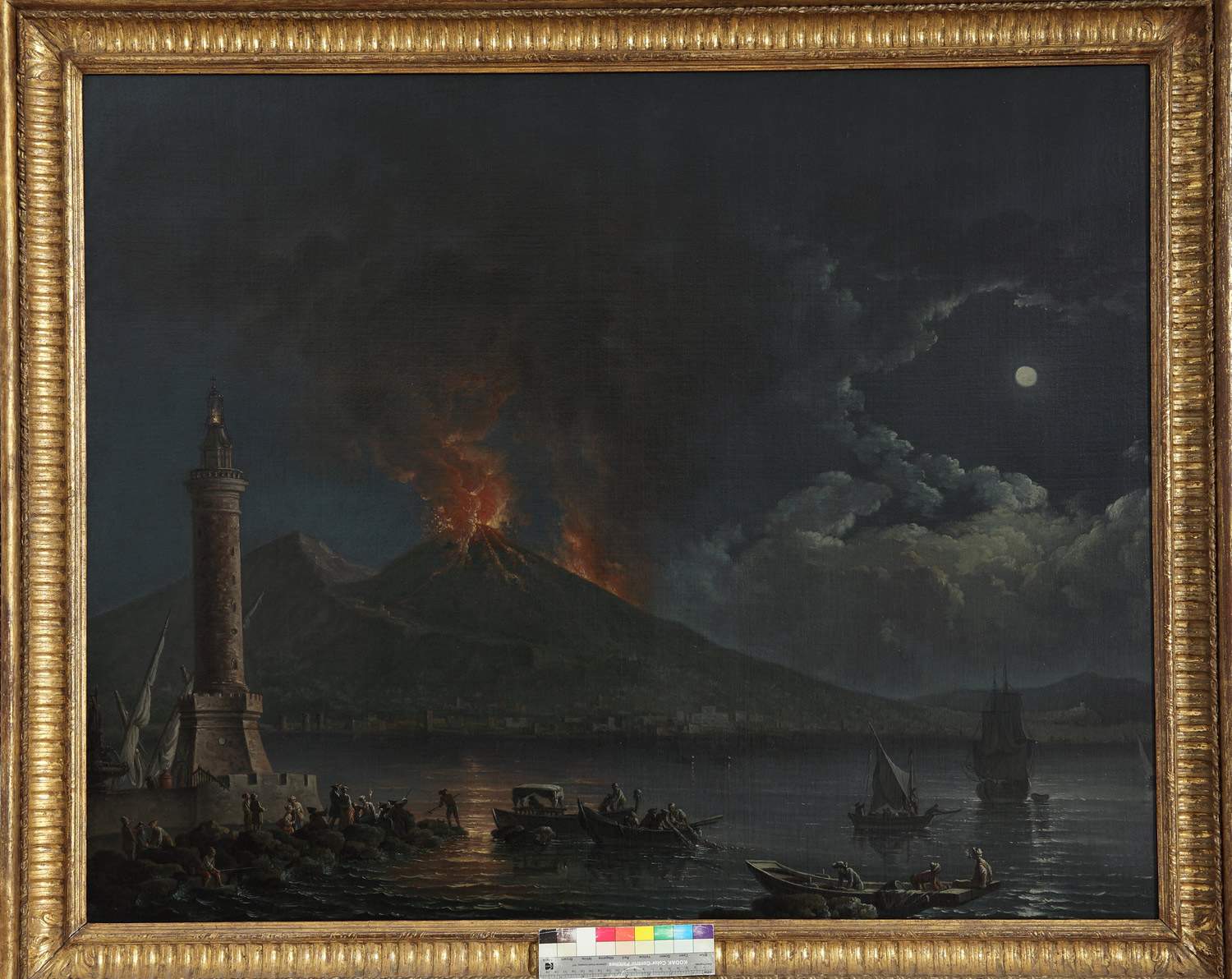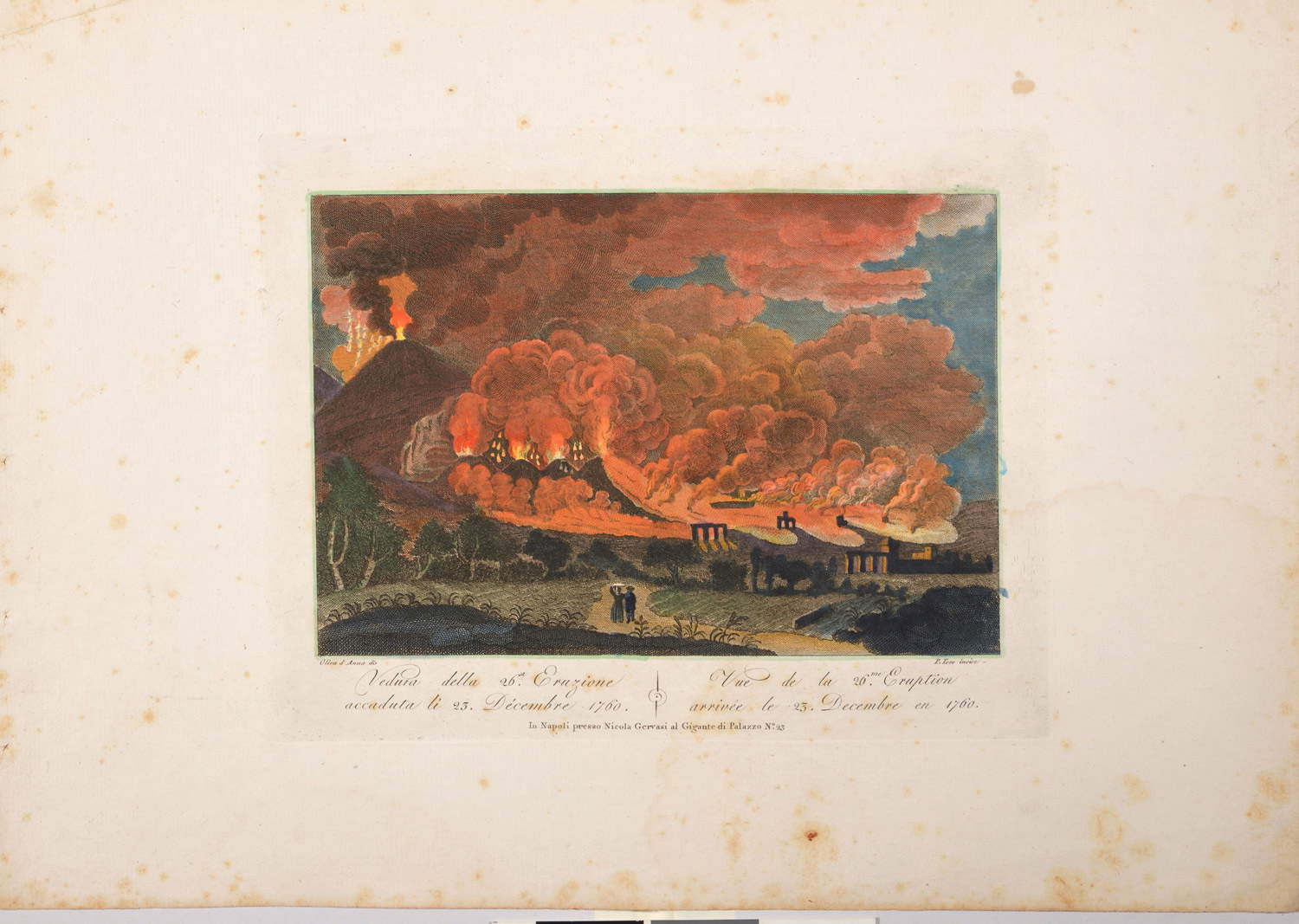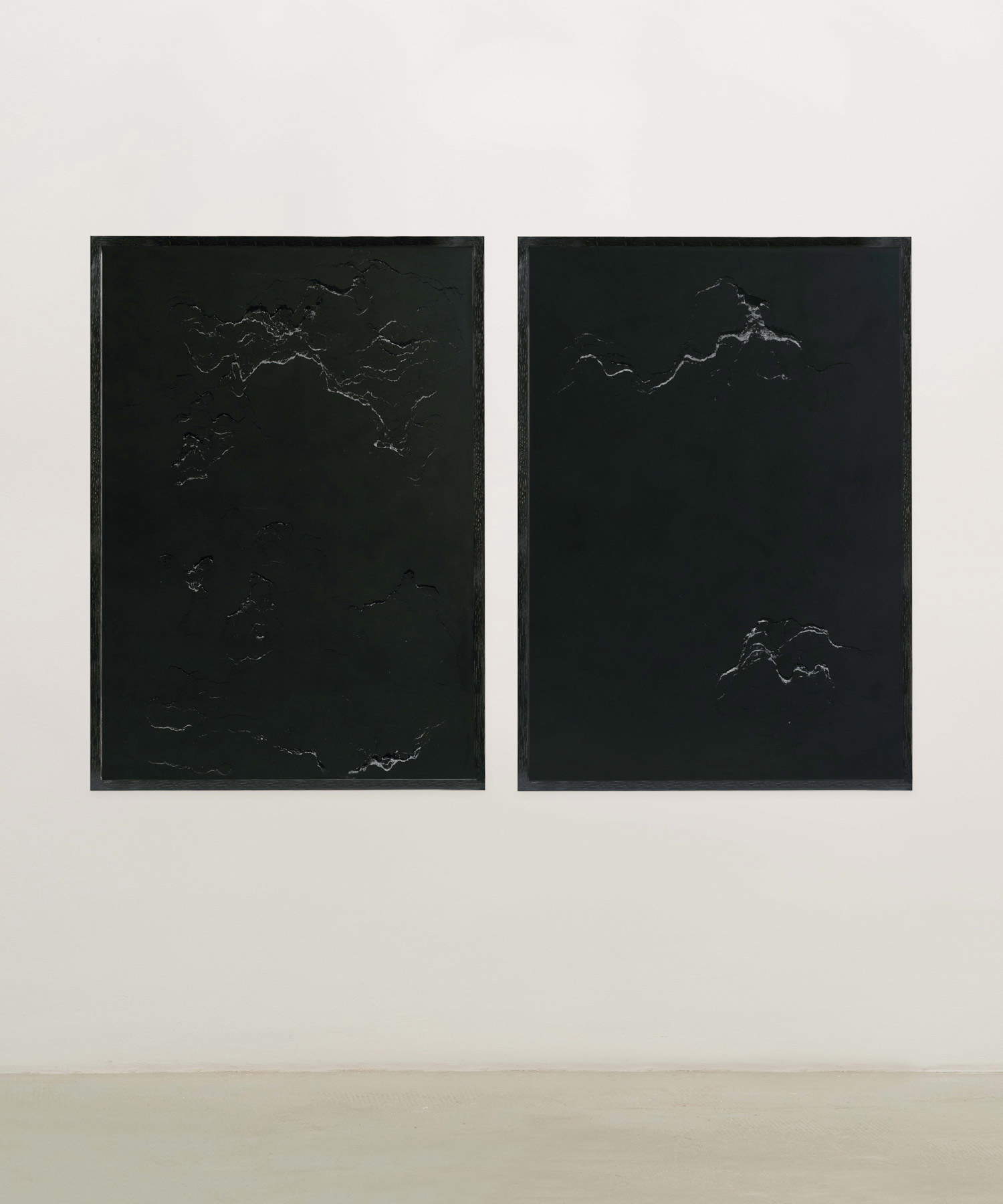by Redazione , published on 16/07/2019
Categories: Exhibitions
/ Disclaimer
From July 6 to Sept. 29, 2019, in Naples, Certosa and Museo di San Martino host the exhibition 'Vesuvio quotidiano_Vesuvio universale'
The Charterhouse and Museum of San Martino in Naples are hosting, from July 6 to September 29, 2019, the exhibition Vesuvio quotidiano_Vesuvio universale, curated by Anna Imponente in collaboration with Rita Pastorelli. The theme of the exhibition is Vesuvius, and in particular its incumbency on the landscape and Naples, throughout the history of art: the volcano has exerted great fascination on artists, who, however, also wanted to express the ancestral fear for the volcano as an expression of the power of nature in the face of which little or nothing can the fragility of human beings. “In the artistic imagination,” explains the curator, “the volcano’s uncanny beauty is considered a tragic symbol of catastrophe, a mountain of fire that destroys but becomes vital and regenerative.” The title of the exhibition, she points out, "draws from that of an exhibition by Stefano Di Stasio, Vesuvio quotidiano (San Gemini, 2016) and from the title of the recent portrait recounted in Maria Pace Ottieri’s book Vesuvio universale. The two opposing terms offer lidea from the terribleness of a looming nature and a sociality that develops to exorcise its danger."
The exhibition offers the public some 100 works from the 16th century to the present, from both the San Martino Museum and other collections, public and private. The start of the itinerary is entrusted to sixteenth-century cartography of naturalistic interest: examples include Athanasius Kircher’s precious print from Mundus supterraneus (Amsterdam, 1665), which presents the fanciful image of a Vesuvius in section. It then continues with a section devoted to the history of the volcano, with particular reference to eruptions between the 17th and 19th centuries, namely those of 1631, 1754, the minor eruptions of the 18th century, and that of 1872. Around the historical collections, with emblematic works such as LEruzione del Vesuvio of 1631 by Domenico Gargiulo (known as Micco Spadaro), a work of very recent acquisition, and the theme of sacred protection, invoked for salvation with the 18th-century reliquary bust of SantEmidio, protector of earthquakes and cataclysms (Chapel of the Treasure of San Gennaro), with the depiction of Castel SantElmo and the Certosa di San Martino, are flanked by some contemporary works. This choice, Anna Imponente points out, is motivated by the fact that "the contemporary works reinterpret a creative and regenerative anxiety that through time translates into bursting vitality. The Leopardian exterminator Vesevo(The Broom, 3, 1836) can infuse allarte with an incomparable flow of new energy, just as it happens in nature for the fertility of the earth, both nourished by a cosmic force in balance between destruction and regeneration."
Inspired by the 1872 eruption is a series of images of the Vesuvian landscape from life by Giuseppe de Nittis, placed in a dedicated room, from the Giuseppe De Nittis Civic Art Gallery in Barletta and a private Neapolitan collection, among the most moving pieces of the painter’s youthful experience. A selection of paintings between the eighteenth and nineteenth centuries is complemented by the artistic evidence of Carlo Bonavia, Pietro Fabris, and Pierre Jacques Volaire, working at the time of the Grand Tour, documenting the pyrotechnic views of Vesuvius. Alongside them are works by Tommaso Ruiz, Antonio Joli, and other artists who painted in the shadow of the volcano.
In a separate room will be displayed the early 18th-century lAllegory of Prosperity and the Arts in the City of Naples by Paolo de Matteis, along with a series of galanterie and porcelain services from the Ferdinandea factory characterized by the theme of Vesuvius in eruption. Also on display for the first time in its entirety will be the valuable series of about 100 gouaches, watercolors and prints, consecrated to the image of Vesuvius, donated in 1956 by Aldo Caselli (patron and scholar and university lecturer), including three plates from the volume by William Hamilton, ambassador to Ferdinand IV: the Phlegraean Fields: observations on the volcanos of the Two Sicilies, London 1776-1779. The volume, with plates by Pietro Fabris, from the Vittorio Emauele III National Library in Naples, will also be on display in the exhibition. Some 50 modern and contemporary works will then be on display in dialogue with the ancient works: Leoncillo’s glazed terracottas from the late 1950s, in which the artistic gesture imprinted on the clay material acquires a rough informal plasticity; Alberto Burri ’s combustion Tutto nero (1956), which refers to the fractures and burns of the earth; Andy Warhol ’s portrait Vesuvius (1985), which depicts myth’s largest volcano, a terribly real thing; Jannis Kounellis ’s Untitled (1996) in which the element of coal concretizes the naturalness of poor matter; Anselm Kiefer’s painting Naval Odes (1997), contaminated by agglomerated lead and burns, an epic depiction of human suffering.
Bizhan Bassiri ’s (2006) two sculptures Meteorites in the Courtyard, an installation complemented by Red Evaporation (2013), a kind of solemn star that dominates the nave of the monumental church, serve as an introduction to the exhibition. The sculptures of Anna Maria Maiolino, an Italian artist working in Brazil, are bearers of an explosive energy capable of modifying the material of concrete and raku. The Neapolitan exhibition continues with the works of Claudio Palmieri, whose ceramic forms contain the lava flow that explodes instead on the paintings; Roberto Sironi ’s sculpture is part of the Fuoco series, composed of bronze casts of burned tree trunks or branches found in nature; in the large papers Adele Lotito uses the evanescence and transparency of smoke to measure and unveil presence and absence; in Inferno (2018) Belgian artist Caragh Thuring draws inspiration from ancient Neapolitan gouaches, translating them into a mellow painting with silhouettes on the summit of Vesuvius, heirs to the poetics of the sublime. Stefano Di Stasio ’s paintings reflect his style amid symbols and metaphors, surfacing from the world of the unconscious and the dreamlike; the tempera paintings on canvas by Neapolitan Oreste Zevola take up in archetypal and primitive forms the figures of saints and sirens, of skulls and volcanoes floating in space, linked to popular imagery; in the Temporal Geographies (2019) by Sophie Ko, a Georgian artist working in Milan, pigment mixes with ash, creating changing landscapes.
The exhibition is rounded out with photos by Antonio Biasiucci, a master of shots of active volcanoes in Italy and Vesuvius in particular; Giovanni De Angelis, whose Volcano refers to the crater as a symbol of sudden changes; Maurizio Esposito, who documents the fires that devastated Vesuvius National Park in 2017; and a postcard by Riccarda Rodinò of Miglione, a play on reflections in the waters of the Gulf; and Piero Mottola’s art sound installation. Along the path of the exhibition, in a small room, Insolite, a short film by Maya Schweizer made with the support of the Goethe Institute, will be screened: it is a sequence of images of present-day Vesuvius in dialogue with those of the last eruption that occurred in 1944, without any narrative connection, but aimed at arousing emotions in the viewer.
For the finissage, Friday, Sept. 27, the exhibition catalog, published by Arte-m, will be presented, with texts by Anna Imponente, Bruno Corà, Fernanda Capobianco, Ileana Creazzo, Luisa Martorelli, Rita Pastorelli, Annalisa Porzio and contributions by Maria Pace Ottieri and Silvio Perrella. On the same occasion, the Gothic Underground, the mysterious underbelly of the Carthusian Monastery, which tells the story of its foundation, a symbolic crater of the Carthusian complex, from which emerge the masterpieces it preserves, will be reopened to the public. At the conclusion of the catalog presentation, Sul volcano, the documentary film by Gianfranco Pannone, will be screened.
The exhibition opens every day except Wednesday (closing day) from 9:30 a.m. to 5 p.m. The full ticket costs 6 euros, reductions and gratuities are as established by ministerial regulations. For info call +39 081 2294510-532-538, write to accoglienza.sanmartino@beniculturali.it, or visit the Polo Museale della Campania website. Below is a selection of works in the exhibition.
 |
| Carlo Bonavia, View of the Bay of Naples from the pier lantern with Vesuvius in eruption (oil on canvas, 103 x 125 cm) |
 |
| Paolo De Matteis, Allegory of Prosperity and the Arts in the City of Naples (post 1714; oil on canvas, 55.2 x 110 cm) |
 |
| Giuseppe De Nittis, Leruzione del Vesuvio del 1872 (oil on canvas, 75.5 x 128.3 cm; Boscoreale, private collection) |
 |
| O. D’Anna-P. Toro, Eruption of Vesuvius on December 23, 1760 (burin and watercolor or watercolor engraving; Naples, Museo Nazionale di San Martino, Caselli fund) |
 |
| Tommaso Ruiz, The Mandracchio, the Mologrande and Borgo Loreto (signed and dated 1748; oil on canvas 44 x 132 cm) |
 |
| Claudio Palmieri, Magma (1992; iron, glazed ceramic, 90 x 55 x 55 cm) |
 |
| Andy Warhol, Vesuvius (1985; acrylic on canvas, 230 x 300 cm) |
 |
| Annamaria Maiolino, Untitled, Entre o Dentro e o Fora, from the series Between Inside and Outside (2014; molded concrete on metal table 42 �? 32 �? 40 cm; table: 31 x 36 x 45 cm; Courtesy of the artist and Galleria Raffaella Cortese, Milan) |
 |
| Anselm Kiefer, Naval Odes (1997; mixed media and polymateric on canvas, 190 �? 330 cm; Courtesy Galleria Lia Rumma Milan, Naples) |
 |
| Sophie Ko, Temporal Geography, Fireflies (2019; 2 elements 100 x 70 cm each) |
 |
| Vesuvius in art history from De Nittis to Burri and Warhol, between fascination and fear. On display in Naples |
Warning: the translation into English of the original Italian article was created using automatic tools.
We undertake to review all articles, but we do not guarantee the total absence of inaccuracies in the translation due to the program. You can
find the original by clicking on the ITA button. If you find any mistake,please contact us.










